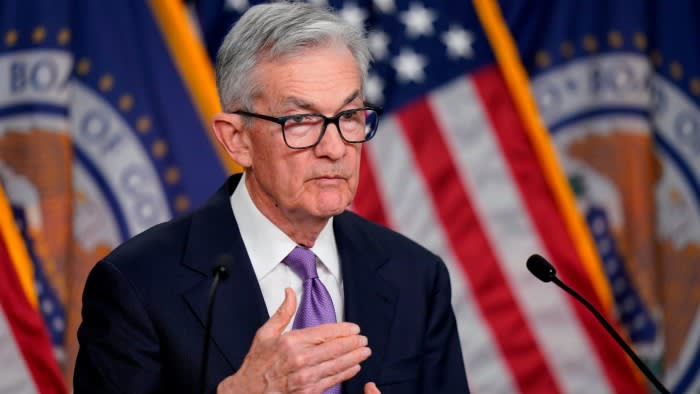Unlock the Editor’s Digest for free
Roula Khalaf, Editor of the FT, selects her favourite stories in this weekly newsletter.
The US Federal Reserve held interest rates at a 23-year high on Wednesday, but gave little immediate indication of when it would begin cutting borrowing costs this year.
The Federal Open Market Committee’s decision to keep the benchmark federal funds target between 5.25 per cent and 5.5 per cent was reached unanimously, according to a statement released from the US central bank after the meeting.
Rate-setters indicated they would need more time before deciding to lower borrowing costs, saying the FOMC “does not expect it will be appropriate to reduce the target range until it has gained greater confidence that inflation is moving sustainably towards 2 per cent”.
The language signals they are unlikely to cut rates as soon as their next vote in March.
But the committee also removed a bias towards raising rates from their statement, confirming that its members think their next move will be a cut: “The committee judges the risks to achieving its employment and inflation goals are moving into better balance.”
The decision to hold rates steady — the fourth consecutive meeting with that outcome — was expected in the market, with traders focused on Fed chair Jay Powell’s post-meeting news conference and any clues he offers about when the central bank will begin cutting rates.
Officials expect to make 75 basis points worth of cuts over the course of 2024, as inflation shows further signs of heading towards their 2 per cent goal.
Stocks dipped and Treasury yields ticked higher after the Fed’s decision, and traders scaled back their expectations of an interest-rate cut in March. Traders in the futures market put the chances of a cut in March at 48 per cent after the Fed’s statement, compared with 60 per cent before the announcement.
The market reactions suggest that investors saw the statement as slightly more hawkish than expected.
Stephen Stanley, chief US economist at Santander, described the statement as a “nice balance between getting rid of the hiking bias but adding that they are not close to easing yet”.
The Fed’s decision comes after data published earlier on Wednesday indicated wage growth was moderating.
Workers received an extra 4.2 per cent in their pay packets over the course of 2023, according to figures from the US Bureau of Labor Statistics, down from 4.4 per cent in the 12 months to September.
The 4.2 per cent figure was higher than the latest readings of inflation in the consumer price index and as measured by personal consumption expenditures, which were 3.4 per cent and 2.9 per cent respectively.
The Employment Cost index on Wednesday also showed salaries were up by 0.9 per cent between September and December, compared with a rise of 1.1 per cent over the previous quarter.
“The further slowdown in wage growth evident in the fourth quarter employment cost index illustrates that easing labour market conditions are helping to push inflation down,” said Andrew Hunter, deputy chief US economist at research firm Capital Economics, adding that the latest data were likely to “reassure” Fed officials that they were on course to hit their 2 per cent target.
